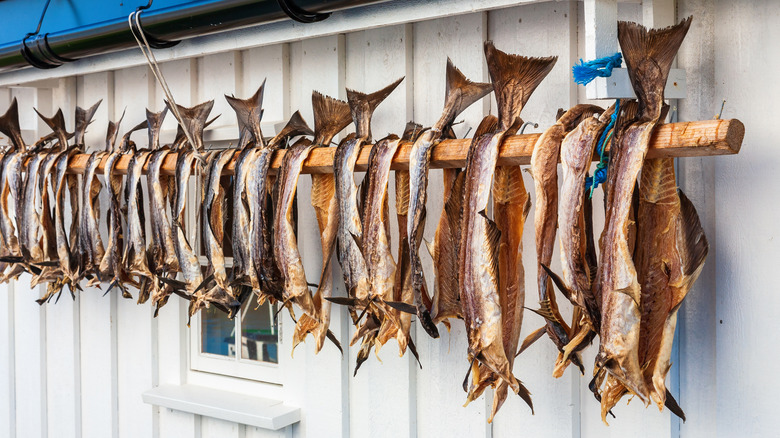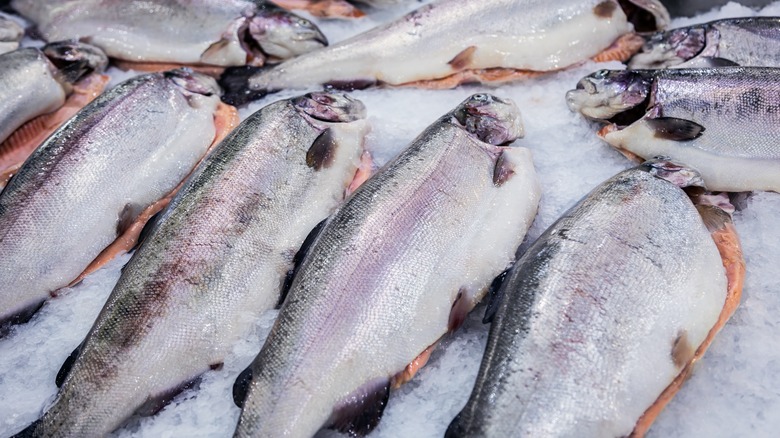The Reason Preserved Fish Were Once More Common Than Fresh
Just about anywhere in the country today, it's not a challenge to find fresh fish. Whether it's from a specialized supplier or just at the grocery store deli counter, refrigerating technology has made fresh fish widely available even far away from the coasts.
This wasn't always the case though. In fact, throughout most of human history, fresh fish was reserved for communities that were based directly on bodies of water. According to the University of Minnesota Extension, fresh fish actually breaks down faster than any other "flesh foods." This can quickly turn the relatively safe meat into a breeding ground for pathogens and bacterias.
Brittanica says that to deal with this quick spoilage, fishermen developed methods like smoking, pickling, salting, and other techniques to preserve fish until it could make it to market. For example, Mere Trout notes that smokehouses were a common sight throughout England in the Middle Ages. They were often used to smoke hams, but were also vital to help preserve the bounty of the sea through periods of poor fishing. NPR reports that salt cod was also an essential food item for many Mediterranean and North Atlantic cultures. History Today says that salt cod was key to Atlantic trading and hundreds of shiploads of cod were being harvested every year at its peak in the 1600s.
Refrigeration made preservation obsolete
With the advent of refrigerator technology to help ship and store fish in safe conditions, the older methods of preparing fish became less of a necessity, and eventually less common. Reddy Ice reports that for thousands of years, civilizations have found different ways to harvest and store ice. Sometimes it was for the enjoyment of what could only be described as the first snow cones by the Romans, but it was also used to preserve fish and other foods. Despite some of the ingenuity used to keep ice from melting in difficult conditions, these methods were never sufficient. Brittanica points out that as early as the 19th century, ambitious inventors were experimenting with refrigeration technologies. It would take decades, though, before the technology would become common enough that it could solve food spoilage issues for most people, and make foods like fresh fish more accessible.
Big Chill says that the first home refrigerators were made available to Americans in 1927. It would take less than two decades before they became one of the most common appliances in the country. By 1944, more than 85% of American households had their own refrigerator.
While foods like salt cod, smoked salmon, and pickled herring can still be found today, they've become artifacts of food history rather than the commonplace mainstays they used to be.

